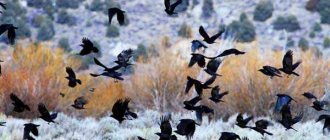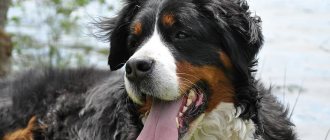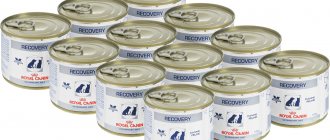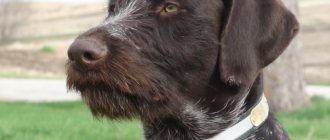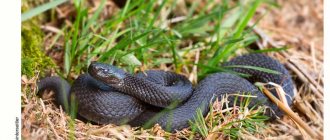Where are llamas bred?
There are now 3.7 million llamas, of which 70% live in Bolivia. Recently, llamas have also been bred in North America: it has turned out that they are excellent shepherds, capable of protecting flocks of sheep from attacks by coyotes. The vigon llama is a type of wild llama. It is found only in one place - in the Andes.
Interesting materials:
Where should you take a drunk person? Who to call if a person is taken by an ambulance? Can a person eat fish? Can a person be poisoned by dichlorvos? Is it possible to bury a person on his birthday? Is it possible to bury pets next to people? Is it possible to find a person through Telegram? Is it possible to wear the shoes of a deceased person? Is it possible to take out a policy for another person? Is it possible to fly in place of another person?
Llama, alpaca, guanaco and vicuna
The domestic llama is a living symbol of the Andes. The similar alpaca, vicuna and guanaco are not so widely known. All these animals belong to the same order of calloseds as camels, and inhabit the mountains of the South American continent at altitudes of up to 5000 m.
Divine animal
The llama and alpaca originated from the domestication of guanacos in what is now Peru about 4,000 years ago. In the Inca state, llamas were revered as divine animals and were sacrificed to the gods. As now, llamas were bred not only for meat, but also as beasts of burden. A male llama is capable of carrying a load weighing 30-50 kg and at the same time walking twenty or more kilometers a day along high mountain trails. Like a camel, a llama can be content with a small amount of water and food. Alpaca is smaller than llama and is especially valued for its beautiful, thin and long wool. When sheared twice a year, it produces over a kilogram of gorgeous, warm, fluffy fur.
Why are they spitting?
The upper lip of llamas is divided in two, and the llama uses these halves like fingers, grasping the stems of grass. This allows them to select plants avoiding the thorny and tough ones. They swallow grass without chewing. Their complex stomach is somewhat reminiscent of the stomach of ruminant ungulates. Like cows, llamas chew regurgitated cud for a long time. If a conflict arises between the lamas, they take a threatening pose - they flatten their ears, lift their heads high and... spit. Most often, a spitting contest is enough to sort things out without resorting to fights.
Alpaca
The alpaca is smaller than the llama, but it has thicker and longer wool, for which it is bred. Very warm and beautiful blankets, rugs, and clothes are made from this wool.
The alpaca looks as if it was wrapped in a fur coat up to its neck. She is bred precisely for this long, unusually thin and silky coat. An alpaca is no larger than a large sheep, so it is unsuitable as a pack animal.
Wild relatives of the domestic llama and alpaca
The guanaco and vicuña are the only wild callosopods in South America. Guanacos once inhabited vast areas of the dry steppes of the Gran Chaco and the savannas of Patagonia. For local residents, guanacos have long been a valuable source of meat and skins, so they were completely exterminated in many populated areas of Argentina. Fleeing from the man, the guanacos retreated into the mountains. Now they can only be found in highlands that are difficult for humans to reach, at altitudes from 3000 to 4500 m. Vicuña lives in Peru, Bolivia and northern Argentina in the same altitude zone. Previously, vicunas were killed in large numbers for their magnificent wool, even more valuable than that of alpacas, but now this species is under protection.
Share link
Characteristics and description of the animal
Llamas are herd animals. They form small groups of a dominant male, several adult females and young. From time to time, skirmishes may occur between females for position in the family hierarchy.
Llamas have acute vision, well-developed hearing and sense of smell, which allows them to promptly detect the approach of a predator and move away from danger.
Unlike most herbivores, llamas are not ruminants. Their stomach has only three chambers, so llamas do not regurgitate food for repeated chewing. A longer and more complex intestine allows the maximum amount of liquid and nutrients to be absorbed from the feed. This explains the difference with other ungulates in the volumes of food and water consumption.
Thanks to their warm, thick fur, mountain llamas tolerate low temperatures, wind, and rainy weather well. They are also quite resistant to many diseases common among domestic ungulates.
What does it look like
The appearance of llamas has the following characteristic features:
- The body is elongated, large, round in cross section.
- The head is relatively small, with a long neck, elongated and pointed ears. Some varieties have long, shaggy fringes that fall over the eyes.
- Llamas have large eyes surrounded by thick eyelashes with black pupils.
- The limbs are thin and short, which is why the animal looks massive and squat. The hooves are small, cloven, and have hard calluses in the lower part, making it easier to move on rocky surfaces.
- Llamas do not have upper front teeth. They pinch grass by pinching it with their lips and pulling it out, and then chew it with their lateral teeth.
The colors of the animals are very diverse. Various shades of brown are predominant: from cream to dark chocolate. Less common are gray, dark gray and black llamas. White fur is the rarest and most prized.
The unique properties of wool are explained by the peculiarities of its structure: the hair is thin and at the same time very durable, the presence of a hollow middle increases its heat capacity, the absence of a coating of natural oils ensures lightness. Products made from llama wool can provide climatic comfort at temperatures from +20 to -20 degrees.
What do they eat
When grazing, the llama feeds on grass, ferns, moss, and young shoots of trees and bushes. In the absence of fresh grass, the animal eats the leaves of evergreen shrubs parastephya and baccharis. In winter, llamas are fed hay, vegetables, and root vegetables.
American llamas are unpretentious in food and get by with a small amount of food: an adult animal needs to eat 3 kg of hay or green mass per day.
Llama wool is very durable
Alpacas have silky wool, which produces a fabric that is more luxurious and softer than cashmere. Llama wool consists of stronger soft fibers. It is used to weave fabric for bags, coats and blankets. Llama wool is processed in the same way as sheep's wool by shearing annually. One llama can produce about 2 kg of light and very warm wool.
Photo: www.weather.com
Natural enemies in nature
The wild variety of llamas that live in nature often becomes the prey of large predatory animals: leopards, pumas, and maned wolves. Most often, predators attack cubs who lag behind the herd and who do not yet know how to run fast.
When danger appears, the llamas give a signal to the entire group and the herd flees. Animals are capable of reaching speeds of 50-55 km/h.
ZEBU
Reproduction
Female llamas become sexually mature as early as one year, while for males maturation lasts until the age of three. Mating takes a long time (30-40 minutes), takes place in a lying position.
After 11 months, the female gives birth to one or rarely two cubs, which are called cria. The llama gives birth while standing, while other females of the family surround her and protect her from possible attacks by predators. A newborn weighs on average 10-12 kg. He immediately gets to his feet and begins to suckle milk. Due to the structure of the oral cavity, llamas cannot extend their tongue more than 1-2 cm, so they do not lick their babies, as all other ungulates do.
Females produce a very small amount of milk, which is barely enough to feed the young. In this regard, llamas are used only for meat, fat and wool.
By four months, the grown-up baby completely switches to solid food and stops drinking mother’s milk. In their natural habitat, young llamas stay with their parents for up to a year, and then the leader of the group expels them.
Did you know?
- Alpacas and llamas are often interbred and the result is a Huarizo.
- The llama is a sacred animal in the culture of the Andean people, who call them the “silent brothers.”
- Scientists have developed a nasal spray made from llama antibodies that simultaneously targets multiple strains of influenza. If approved, the drug could replace the need for an annual flu shot.
- Llamas have a calming aura. They are used as therapy animals in hospitals, schools and nursing homes.
- The llama is a relatively quiet animal, communicating through a series of clicks, gurgles and moos.
- When dried, llama dung can be used to start a fire instead of firewood. Their manure has a surprisingly low odor, and most llamas use the same spot to defecate, making later cleanup easier.
- Unlike the camel, llamas require fresh water daily, although they drink significantly less than a horse or cow of comparable size.
How the llama became a pet
People domesticated the llama 6,000 years ago. These were Indian tribes who lived on the slopes of the Andes mountains. The llama is adapted for life in a changeable mountain climate, its endurance is not inferior to the Tibetan yak and is superior to mules and donkeys. Therefore, people began to use animals in the household, primarily for transporting goods. An adult male can carry a weight of up to 50 kg over a distance of 27-30 km. These animals thrive in conditions of lack of oxygen, while simultaneously carrying a heavy load and balancing on narrow mountain paths.
A herd of llamas grazes on a mountain slope
Before horses appeared on the South American continent in the 16th century, the llama was the only beast of burden.
People have long appreciated the quality of its wool and made yarn from it. They made clothes from the skins and ate meat.
INTERESTING FACT. People who transport luggage on llamas say that the animals will never carry a weight of more than 50 kg. How they determine the mass of the cargo is still unclear.
What is an alpaca coat?
For sewing demi-season and winter clothes, alpaca fabric is used, made using special technology. The raw material for it is the shorn and processed wool of domestic artiodactyl animals grown in the highlands of Peru, Bolivia, and Chile.
Interesting materials:
Iron sulfate 5 solution how to make? What does honeysuckle berry taste like? What is the act of reconciliation of mutual settlements? What is nitrogen fertilizer? How to close jars with screw caps? What kind of fertilizer is vermicompost and how to use it? How to prepare a 1 percent solution of Bordeaux mixture? Bordeaux mixture, how to dilute, instructions? Whose national dish is lula kebab? What is wheatgrass afraid of?


